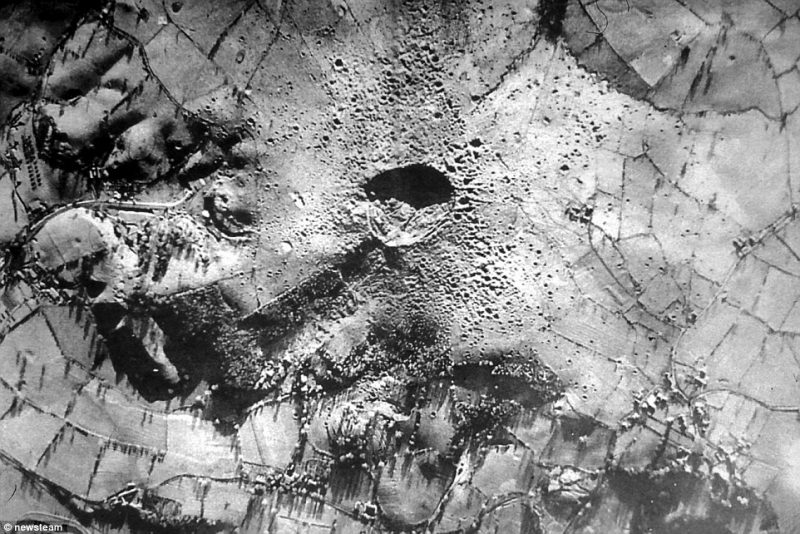Seismologists in Switzerland at first thought it was an earthquake, hardly guessing the seismograph recorded the effects of a massive explosion in far distant England.
What their instrument registered was the simultaneous detonation of 4,000 tonnes of bombs and ammunition stored underground at RAF Fauld near the village of Hanbury, England. Seventy people were killed of which 18 were never found, and numerous homes and shops were destroyed.
Most of those killed, 31, resulted from the release of six million gallons of water from the reservoir that engulfed not only a nearby plasterboard factory but everything in its way.
The blast left a crater 100 feet in depth and 250 yards wide and is thought to have been approximately one-fifth of the force of the atomic bomb that destroyed Hiroshima.
Over 100 people attended the 70th anniversary of the explosion recently which also marked the unveiling of a memorial. A similar service at St.Werburgh’s Church in the village of Staffordshire village was also held.
Trevor IBall, parish council chairman, said there was a large response. They think the Ministry of Defence and the RAF at Stafford will attend. British Gypsum is expected to unveil a memento plaque coupled with a brief service. People from different parts of the church (of England) died in addition to Italian prisoners of war who would have been Catholic.
A commemoration was held annually until ten years ago when attendance dropped after the 60th anniversary.
Mark Rowe has spent 30 years researching the incident. He said an RAF inquiry, only published in 1974, determined it was an accident that was avoidable.
According to the report, the most probable explanation is that someone attempted to take out an exploder with a brass chisel. That generated a spark setting off other ordnance.
The report concluded negligence is indicated by supervising personnel who didn’t have the knowledge, didn’t possess an adequate sense of responsibility or an absence of appropriate direction from senior managers.
Rescue efforts took three months hampered by 10,000 tons of rubble and six million gallons of water from the reservoir and pockets of gas, Mail Online reported.
To look at the location today, a person would be hard pressed to detect anything amiss except for memorial plaques and warning signs. Twelve acres of the pristine country still contains unexploded ordnance. Near the crater’s edge is the first commemoration of the disaster with the carved names of those who were killed.
